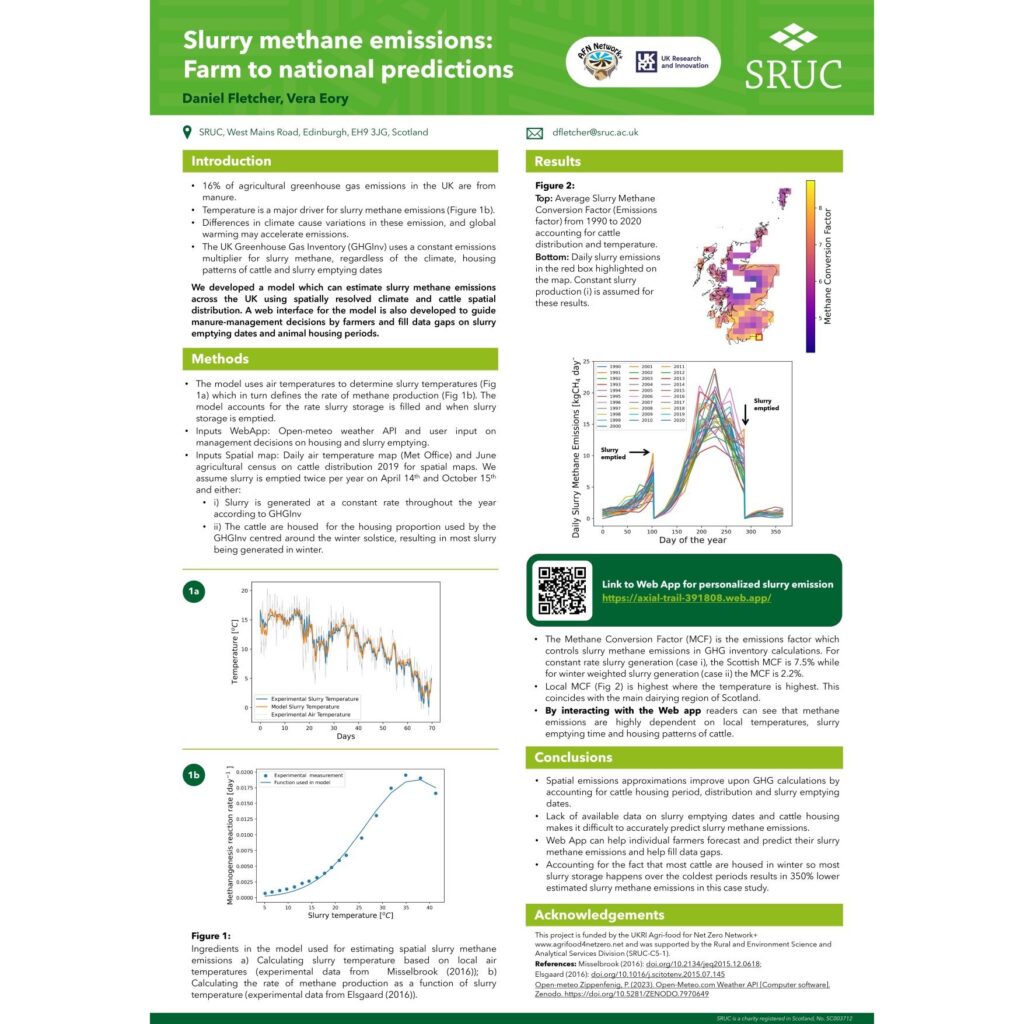Manure is a valuable resource for farmers as it provides a renewable source of organic fertiliser which increase yields and soil health. But manure can also be a significant source of greenhouse gases if poorly handled. It is estimated that around 16% of British agriculture’s global warming potential originates from manure emitting methane and nitrous oxide, both of which are potent greenhouse gases. The amount emitted depends largely on the temperature at which the manure is stored. Additionally, nitrogen can be lost in the form of ammonia gas (a pollutant that can damage ecosystems), reducing the fertility of the manure when applied to the field, often leading to over-use of synthetic fertiliser.
In this project we will develop a free web-application that provides farmers with personalised forecasts of gas emissions from manure using farm weather data. This will enable effective decision-making by farmers to reduce emissions and increase manure fertility.
Project lead: Daniel McKay Fletcher, Scotland’s Rural College (SRUC)
Project members: Alexander Pirie, SAC; Steve Anthony, ADAS; Vera Eory, SRUC; Yang Lu, York St. John University
Findings
- Manure methane emissions are highly dependent on local temperatures.
- Making sure stored manure volumes are low while temperatures are high is a simple way of reducing emissions.
- When relevant, models used for research should be made available for farmers to help them make decisions to reduce emissions and save money.
- National inventory calculations of emissions of manure should consider when in the year and where it is stored.
Suggestions for further research
Weather is one of the primary factors in agriculture. As climate change becomes more pronounced it becomes increasingly difficult for farmers and land managers to predict the weather and make good decisions regarding production and nutrient/carbon loss. Farmers can no longer rely on historic weather patterns to inform decisions. The tool developed in the project attempts to translate modern weather forecasting models into results that are relevant for the farmer to inform their decisions using modelling. Manure management is one of many areas where integrating weather forecasts with modelling can help farmers make decisions. Besides methane emissions from manure, ammonia emissions should be modelled in a similar way. In arable, weather forecast modelling could be used to predict the best time to drill/ harvest, when to apply fertiliser to reduce emissions and nutrient losses.
Creating a tool to predict manure emissions for farmers
Poster Presented at the AFN Big Tent 2025



